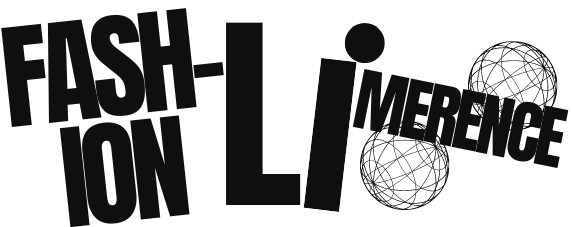No doubt you’ve heard of Rogaine, the over-the-counter treatment touted for hair growth and reversing hair loss. Commercials promoting a “miracle” turnaround for balding have been around for decades.Right off the bat, know that Rogaine is a brand name. The real name of its key active ingredient is minoxidil, which is supposed to stimulate hair follicles into growing thicker hair – even some follicles that have shut down.
Use at Your Own Risk
Here at The, we’re gonna give you some information about minoxidil and beards, but we’ll stop short of endorsing or nixing the product outright.
Info out there is confusing. Some sites you go to will say never to use Rogaine on a beard, while others will say it’s fine and works great.
For you, it could be an amazing godsend. Or it could be a disaster. Or it could be a bit of a nothing result for a lot of effort and expense.
Should you choose to try minoxidil for beard growth we accept no responsibility, no credit, and no blame. Know the facts and choose wisely.
It’s FDA Approved – For Head Hair Only

The Food & Drug Administration has the authority to approve or ban products used by consumers, but there’s a slightly gray area with minoxidil.
Since the ‘80s and ‘90s, many fraudulent “cures” for baldness have been deservedly banned by the FDA – and man, there were a LOT of them. Back in the day, there was a shyster every minute on TV airwaves spraining truly outrageous and, let’s be honest, BS treatments for baldness and thinning hair.
Minoxidil (Rogaine) was approved by the FDA in 1996 for treating male pattern hair loss and also female pattern hair loss. “Pattern hair loss” refers to hair on the scalp, not the face. So the key factor is that the FDA approval dealt with scalp hair only. It never delved into beard hair.
What About Studies That Say It’s Good?
Surprisingly, there haven’t been many studies in this area. We’d love to see more.
A crucial peer-reviewed study from 2012 showed some increase in beard growth and thickness after using minoxidil. But it was a study of only 40 men comparing topical minoxidil against an oral product called finasteride. The finasteride performed better for facial hair growth, but this product is prescription only.
Other studies have had a group of men use minoxidil while the same-sized group has used a placebo product, with no participants knowing which product they got. Again the minoxidil showed better baseline beard hair growth.
Be Wary of “Self-Reporting”
If you see a bro online posting photos of his beard growth from using minoxidil, please take it with a grain of salt. It’s not scientific in any way and doesn’t show any reliable, repeatable patterns. Meanwhile, pretty much nobody will post that the product failed, so there’s inevitably going to be some bias towards saying how great it is.
How Does Minoxidil Work?

In a nutshell, minoxidil applied to the skin opens blood vessels next to hair follicles to nourish and stimulate them. From there, hairs can grow better and stronger.
Conclusion
Considering using minoxidil for enhancing your beard? Here’s what you need to know:
- Minoxidil, primarily approved for scalp hair, has shown some promise in stimulating beard growth.
- Results can vary significantly from person to person, and the effectiveness for beard growth hasn’t been extensively studied.
- It’s crucial to weigh the potential benefits against the risks and side effects, which can include changes in beard color, texture, and other dermatological reactions.
- Remember, minoxidil’s effects are not permanent, requiring ongoing application to maintain results.
- Before starting minoxidil or any new treatment, consult with a healthcare professional to discuss your individual circumstances and any potential risks.
Ultimately, the decision to use minoxidil for your beard is personal. Whether you’re aiming for a fuller beard or embracing your current style, proper grooming and care remain essential for healthy beard growth and maintenance. Whatever path you choose, be informed, cautious, and prioritize your overall well-being.
FAQs
Q1: Can women use minoxidil for facial hair growth?
Minoxidil is generally not recommended for women to use on their faces due to potential side effects and lack of FDA approval for this specific use.
Q2: How long does it take for minoxidil to work on the beard?
Results can vary widely, but many users report noticeable changes in beard growth after several weeks to months of consistent application.
Q3: Can minoxidil make beard hair grow faster?
While some users report faster growth, this effect can vary. Minoxidil primarily aims to increase hair thickness and density rather than speed up growth rate.
Q4: Is it safe to apply minoxidil to the beard area?
As with any medication, there are potential risks and side effects. Consult with a healthcare professional before starting minoxidil, especially if you have pre-existing medical conditions.
Q5: Can I stop using minoxidil once I achieve my desired beard growth?
Unfortunately, the effects of minoxidil are not permanent. Discontinuing use can lead to a reversal of the growth achieved, returning the beard to its previous state over time.
Q6: Are there natural alternatives to minoxidil for promoting beard growth?
Some people explore natural remedies such as essential oils (e.g., jojoba oil, castor oil) and dietary supplements as alternatives to minoxidil. However, scientific evidence supporting their effectiveness for beard growth is limited.
Q7: How can I minimize the side effects of using minoxidil on my beard?
To minimize potential side effects, follow application instructions carefully, use the recommended dosage, and monitor your skin for any adverse reactions. Regularly consult with a healthcare provider for guidance.

